Viva La Roma! The beginning of our fourth day was a hectic one. We began our day bright and early with lively conversation over a lovely breakfast. We then proceeded to board our bus late, but we still managed to arrive early for our 9:30 tour of the Pyramid of Cestius.
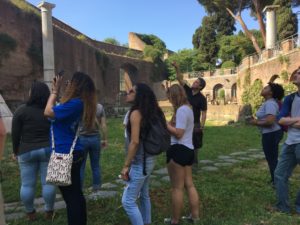
Dr. Goldman, ladies and gentlemen
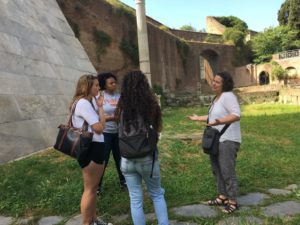
Dr. Kennedy in action
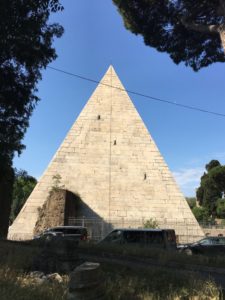
Exterior of the Pyramid of Cestius
The pyramid of Cestius was a surprising and awe-inspiring monument. The pyramid was built as a mausoleum for Gaius Cestius, a magistrate. It has a concrete core with white marble slabs covering it. This nearly 5-meter-high towering pyramid not only demonstrated the great wealth of the Romans, but also demonstrated the breadth of their empire, which had spread into Egypt in 30 BCE. The pyramid is believed to have been built somewhere between the years of 18-12 BCE, when emperor Augustus, in 18 BCE, passed a law that prohibited the presentation of vast amounts of wealth in burials, such as tapestries in the temple and the death of Marcus Agrippa who Cestius mentions as his heir.
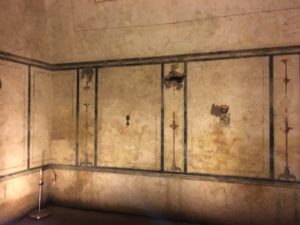
Candelabras on wall inside the Pyramid of Cestius
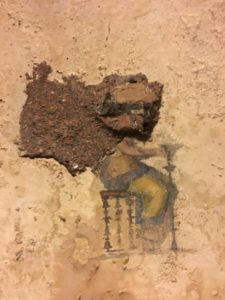
Damage caused by looting of the tomb
The pyramid’s interior demonstrates the earliest example of the “Third style” of Roman wall painting. The frescos inside the pyramid, along the walls, show tall red, green, and gold candelabras and both seated and standing figures. On the ceiling of the tomb are four winged figures painted with gold togas and green wings, holding a garland. The vibrant colors of the paints used for the frescos is impressive and helps us see antiquity in lively color. Oftentimes, we think about the classical aesthetic consisting of pure white marble statues, columns, and togas, but this proved otherwise. Unfortunately, however, you can see the damage caused by people looting the tomb by the large holes where wealth was stored on the frescos and in the ceiling of the tomb.
Indeed, this tomb, demonstrated how the Roman’s use of space through monuments showed how the Romans wanted to be viewed and showed the vastness and power of the empire.
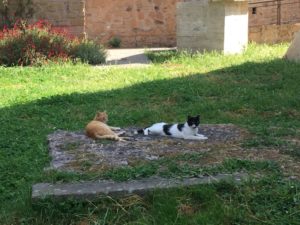
Cats of Roma
Upon leaving the pyramid, we saw some of the cats of Rome. The two cats played and tackled one another. (Lex decided they were a romantic couple in a domestic trifle).
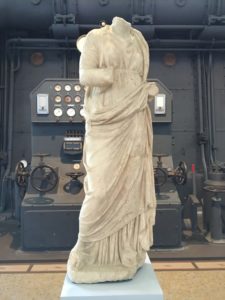
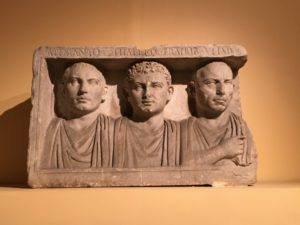
Freedman relief in veristic style
We then made our way to the Monemartini Powerplant Museum. The museum was an interesting juxtaposition of the industrial setting of the building, as it was originally used as a powerplant, and the ancient roman artifacts filling the building. Although the museum houses many diverse and interesting Roman sculptures, mosaics, and other artifacts, the freedman reliefs really stood out and were some of the most captivating pieces. Perhaps what made them stand out is how realistic they were in portraying people’s facial features, expressions, and even personalities. This made them especially stand out amongst the idealized sculptures like that of Augustus and other elites of the late-Republican and early-Imperial eras. We saw a variety of these realistic reliefs, which demonstrate the veristic style of portraiture, which seeks to accurately represent a person. The many reliefs portrayed various people, but despite the variation, each was so realistic that it seemed to tell a story of the Romans sculpted within them. The veristic style was typically used to portray freedman, while the idealistic style was typically used by elites, which was another interesting contrast. Hence, seeing the veristic feedman reliefs helps to show how skilled the Romans were at art, but also really helped us see the Romans in a more realistic, lively way.
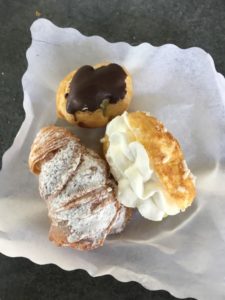
Once we left the museum, the group headed to a pastry shop in which we stumbled over ourselves and our Italian vocabulary; while some of our Italian was not the best, we were able to leave the shop successfully with, not just one, but several delicious pastries in hand (Viva La Roma!)
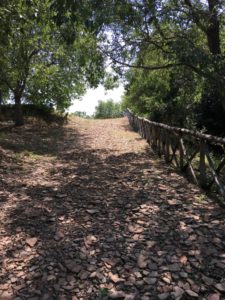
Path leading up to the top of Mount Testaccio
Our final destination for the day was the 156 feet tall Monte Testaccio (or Mons Testacceus, in the words of Prof. Goldman). In the present day, Monte Testaccio is seen by most as a mound composed of broken antiques from the Roman Empire, but we Classics buffs know better than that. These “broken antiques” are actually old vases or amphorae that held olive oil. The Romans used olive oil for many things, including cooking, bathing, for their lamps, etc. However, due to the way olive would seep into the amphorae and go rancid, when the Romans were finished with their vases, they discarded them like old shoes (sandals).
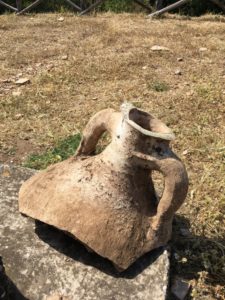
Kevin’s pot
On our adventure today, Testaccio not only provided us with a bit of friendly competition of who could find the best broken vase (Prof. Goldman and Kevin tied for first), but it also served as evidence for the consumeristic nature of the Roman empire. Looking around at all the broken vases, it became clear that the wealth, power, and dominance of the Roman empire allowed the Romans to buy and consume whatever they desired at any costs. The Romans had most of their olive oil imported from northern Spain, which was part of the large empire. On the other hand, though, this mound showed how huge the populus of Rome was, given that they produced that much waste, and how high the needs for goods, such as oil, were. In many ways, this mound, showed the mundane, realistic-side of everyday life in Rome, in contrast to the grandiose displays of the elites, such as the Colosseum.
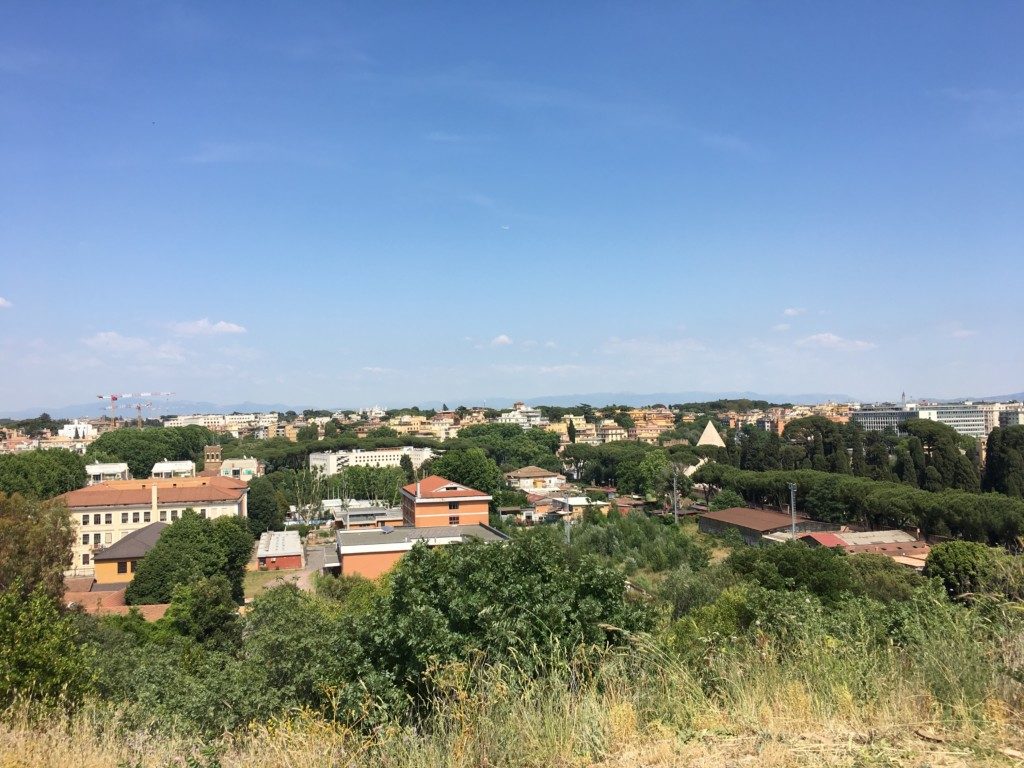
View from Testaccio
